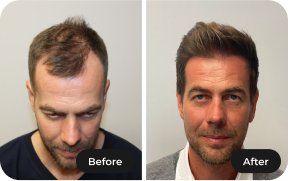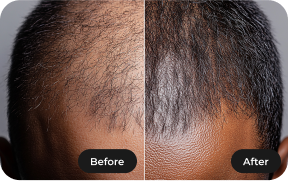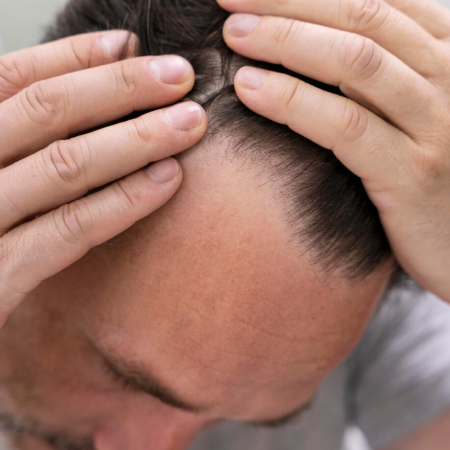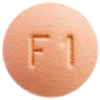Effective treatments for a fuller head of hair
Get StartedAffordable Hair Loss Solutions Subscription
Start your journey to healthier hair with our special offer. Get your first month of doctor consultation for hair loss (where required) for just $19 now waived to $0.
And enjoy ongoing treatment support at $0/month after the first month.

Bondmeds Products
How it Works
1. Medical History
2. Online Visit
3. Receive Meds
Yes, that’s majority-meaning you’re not alone

Healthy Eating

Regular Physical Activity

Medications

Nutritionists
Frequently asked Questions
What are the most common causes of hair loss in men?
Hair loss in women often stems from one of two main conditions, which may sometimes overlap.
The most prevalent cause is female pattern hair loss (FPHL), a chronic and progressive condition that begins at any age and results in thinning hair, especially at the top and front of the scalp. The exact cause is unclear but is thought to involve a combination of genetic and hormonal factors. Early treatment can help slow its progression and promote regrowth.
Another common condition is telogen effluvium (TE), which leads to increased hair shedding due to premature release of hairs in the resting phase of the growth cycle. TE is often triggered by significant events such as childbirth, major stress, illness, surgery, or certain medications.
Chronic TE, which typically affects women aged 30-60, may occur without a clear trigger. This form fluctuates in severity over months or years, often without noticeable changes in hair density, though individuals may experience reduced volume.
What medications are available through Bondmeds for hair loss?
Oral minoxidil, an oral medication that is FDA approved to treat high blood pressure. The typical dosage range used to treat hypertension is 10-40 mg/day. Although not indicated for treatment for hair loss in women, healthcare providers have the discretion to prescribe a medication for a non-approved use (“off-label”) if they believe it is an appropriate course of treatment for a particular patient. For hair loss, oral minoxidil is used at much lower dosages, with 0.25 – 2.5 mg being the typical dosage range used for females. As such, the treatment is often referred to as “low dose oral minoxidil.”
Hair Solution Rx, a customized topical with dermatologist-backed ingredients that address hair loss from a number of angles to optimize topical treatment (ie., topical minoxidil but better). Hair Solution Rx is a compounded drug that contains minoxidil, tretinoin, and melatonin. As there is no additional benefit to taking both oral minoxidil and the topical formulation, it is not recommended to use both.
What is oral minoxidil?
The active ingredient in oral minoxidil is identical to that in topical minoxidil (generic Rogaine). While topical minoxidil is FDA-approved for treating hair loss and is available over-the-counter, oral minoxidil is used off-label for this purpose and requires a prescription. Although oral minoxidil is FDA-approved at higher doses for managing high blood pressure, low-dose oral minoxidil has been prescribed as a daily, non-hormonal hair loss treatment. Clinical trials on high doses for blood pressure showed that many patients experienced improved hair characteristics, such as elongation, thickening, and enhanced pigmentation, including on the scalp.
How does oral minoxidil work?
The exact way minoxidil works for hair loss remains unclear. Although the precise mechanism isn’t fully understood, it is believed to extend the growth phase of hair follicles and enlarge the follicles, which may help stimulate hair regrowth and improve density.
Additionally, minoxidil is thought to relax the smooth muscle in blood vessel walls, causing them to dilate and enhance blood flow. This increased circulation may contribute to its ability to prevent or slow hair loss and encourage hair regrowth and thickness.
How long does it take for hair loss treatments to work?
For both oral minoxidil and topical Hair Solution Rx, which contains minoxidil, users might start seeing results as early as 3 months, though this is less common. Generally, it takes 6 to 12 months to experience the full benefits.
Our team of over 180 physicians and nurse practitioners is dedicated to providing top-quality care, supporting you in addressing hair loss and regrowing your hair.
True members, true outcomes

Banjomann Frenklin

Jerry Peterson












